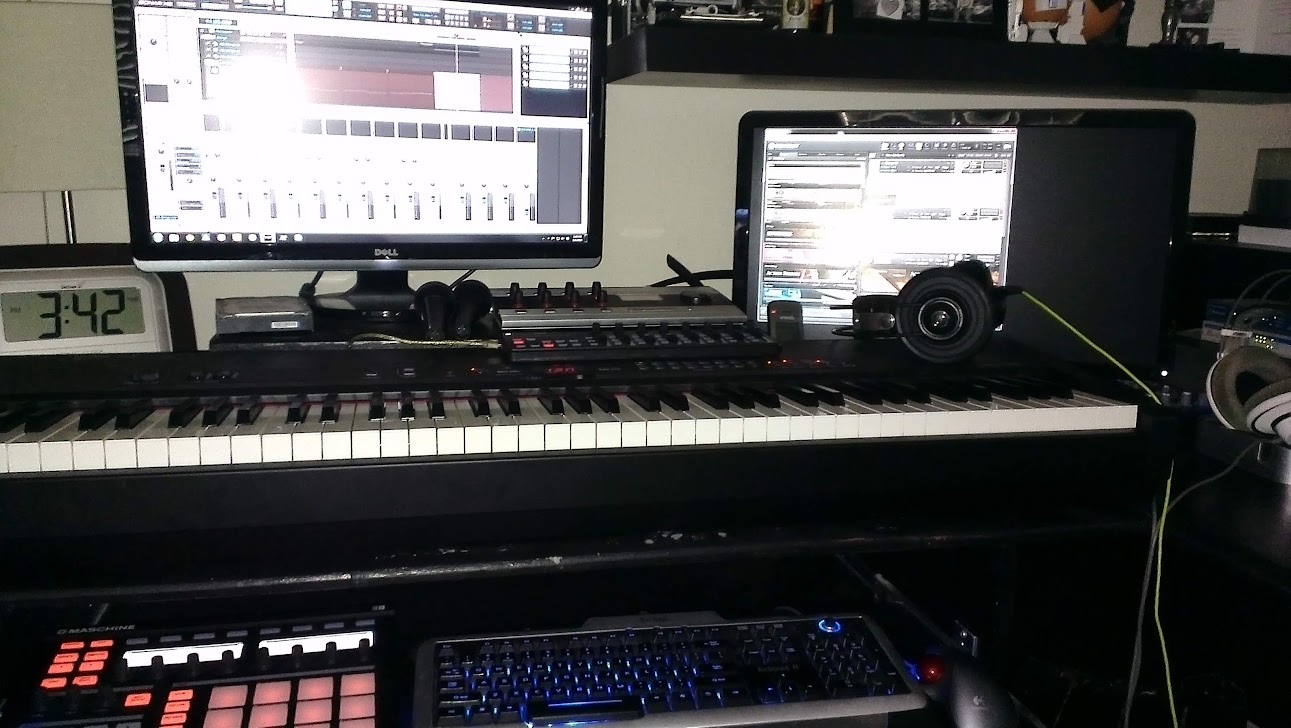
Iostream Members
-
Posts
35 -
Joined
-
Last visited
Content Type
Profiles
Forums
8Tracks
Events
Blogs
Posts posted by Iostream
-
-
I haven't used the DT-880 before but impedence is only part of the equation. I use AKG K701 and Q701 which are fairly low impedence, but notoriously hard to drive. My experience with the Scarlett interfaces (2i2) is that they don't have a ton of oomph in the headphone amp. At max volume, they would not touch my mixer at 50%, and nowhere close to my headphone amp at 25%. I have heard good things about the 880s, but you might be looking at a headphone amp either way. Or even a basic mixer board with a good headphone section.
-
Always good to remember reality. For instance, brass and woodwinds player have to breathe, not ridiculously long legato.
-
I suppose it depends on your budget for the sub. One bit of importance is how well it will blend with what you have already. I am not real familiar with the M-Audio monitors. In the budget category, I have a friend with the Audioengine S8 which sounds fairly good, though he has it paired with audioengine monitors. Bluesky subs also sound fairly good, again, I have only heard them paired with Bluesky monitors though.
Generally I would avoid any home theater focused subs unless you are willing to spend a lot. Most of them are geared towards impact, and not musical at all. Exceptions to this come from REL, B&W, Velodyne (at their high end), and JL Audio, but you pay dearly for them.
-
It's a Saitek Eclipse II. I have a couple of them, and love them. They have taken years of abuse without a single problem.
-
I have a ton of libraries, various organic pieces, but for symphonic, I tend to use Albion I the most. It doesn't give all individual pieces, more broad strokes (strings hi, lo, brass hi, mid, low, and winds hi, lo), but it is a great library for cinematic bits. I tend to augment this with Session Strings Pro, or Action Strings. There are many other libraries which sound as good or give more control, but Albion works for me, and does a great job at a reasonable price. Whatever you use, you will need to learn the library. Even when they are all in Kontakt, they are all scripted differently and to get the most out of any given library you will have to learn its particular expressions and articulations.
-
I go one of two ways.
1) For more orchestral pieces I use Kontakt for drums and use the maschine controller to tap in beats in Sonar. Frequently not in loop mode, and I go through in piano roll to fix them up a bit after the fact.
2) For more song structure pieces, I do loop recording in Maschine and use the maschine controller to tap out the beats.
Using pads lets me get a more human feel than just clicking in the beats I want. I still clean them up a bit after the fact, but velocity just seems more real when I tap them in.
Occasionally for more simple beats, I get my 7 year old to play them in using the drum kit (Simmons SD7) to input midi, mapped to the drums I want instead of the head on the kit. He is pretty good for a 7 year old, and honestly the variation from him is even better than my tapping pads
-
My humble setup. Almost all ITB at this point, though I want a few analog pieces to augment things (Eurorack!)

Yamaha CP33 controller/sustain/expression
i7 w/24G of memory
NI Maschine
NI Kore 2 Controller
Korg Nanokontrol2
AKG K and Q 701s
Sonar X2 Producers
NI Komplete 9 Ultimate
U-He Zebra2
Heavyocity Aeon
Spitfire Albion I
8dio Forgotten Voices
Various small libraries
Not pictured are a couple of guitars, a bass, and a bad electric kit (Simmons SD7) used to trigger battery samples.

What do you use for organic/symphonic sounds?
in Music Composition & Production
Posted
Actually, with most orchestral, never take your hand off of the wheel. Even very slight variations when you are trying to keep the same volume give a much more human feel. Bow pressure is very organic, never a constant line.